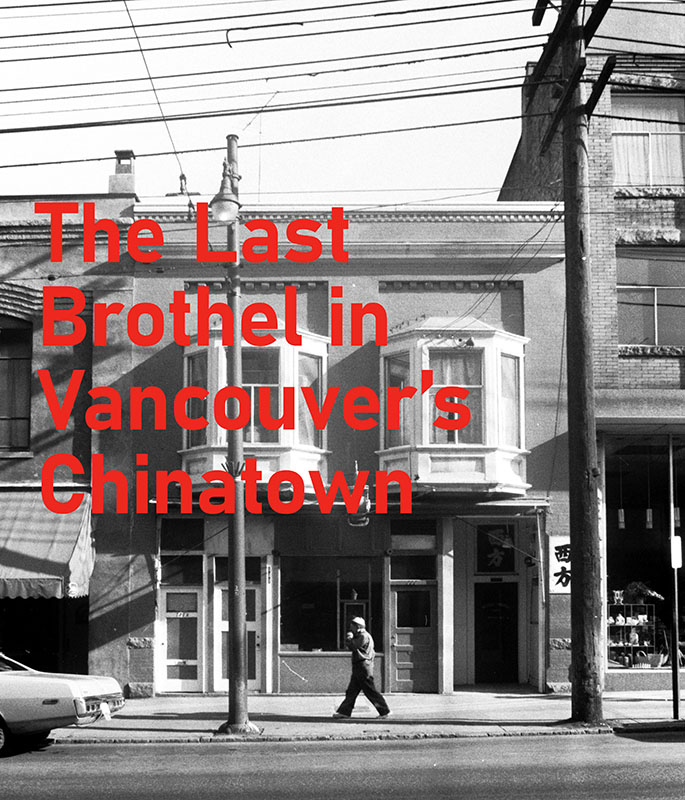The Last Brothel in Vancouver’s Chinatown
Quick Summary
- Dive into the history of Vancouver’s last brothel in historic Chinatown at 111 East Pender
- Discover commercial connections to the Sam Kee Building better known as the World’s Smallest Building, now Jack Chow Insurance
- City officials cracked down in 1906 due to arrival of Railway and changing landscape of Vancouver
By Lani Russwurm, In-House Historian at Forbidden Vancouver Walking Tours
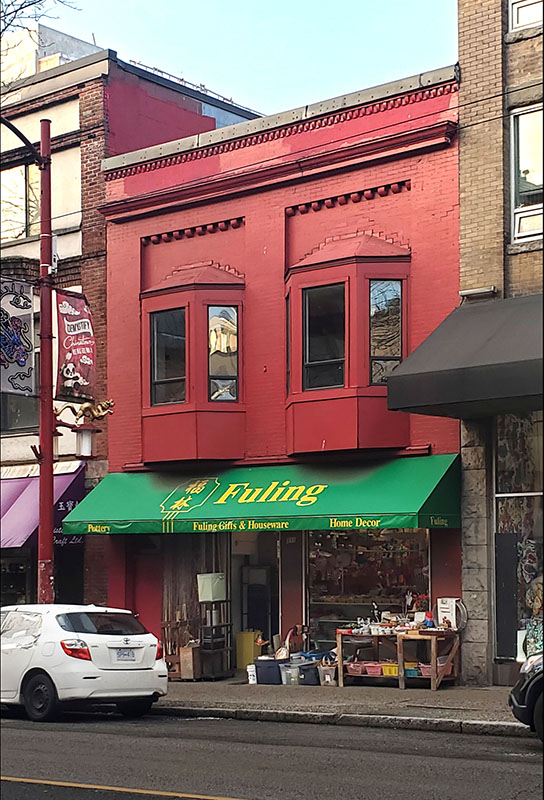
111 East Pender Street, formerly 111 Dupont.
The Origins of Vancouver’s Red Light District
The small red brick building at 111 East Pender Street is the last relic of Vancouver’s original Red Light District. Until 1909, East Pender between Main and Carrall Streets was called Dupont Street, which featured a handful of Chinese businesses in a sea of “disorderly houses,” or brothels, run by women for the city’s mainly male, working class population. This building holds a significant, often overlooked, place in Vancouver Chinatown’s history.
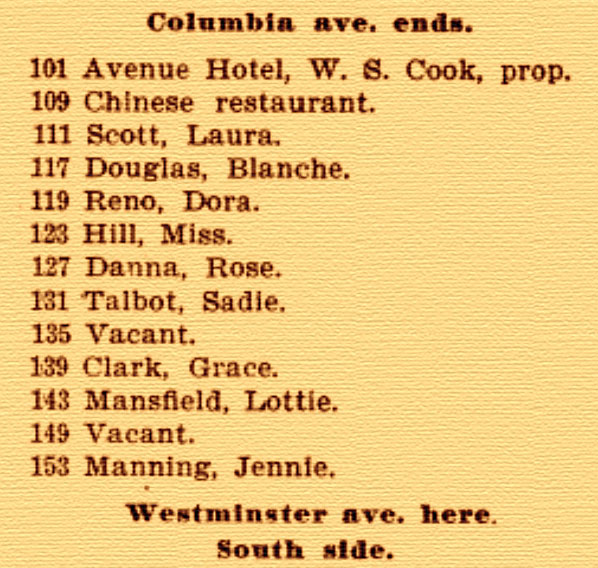
Laura Scott and other brothel-keepers listed in the city directory on the northside of the 100 block of Dupont in 1904.
Laura Scott: Dupont Street’s Madam
Many of the city’s madams owned their own buildings, but Laura Scott rented 111 Dupont from Chu Lai, who had it built for this purpose in 1903. She had run her “house of ill-fame” in the house formerly on that site and at neighbouring addresses since at least 1891, the first time Scott is mentioned in newspapers for saving a woman overdosing on opium-based laudanum. She occupied the current 111 Dupont/East Pender building from its opening in 1903 until 1906.
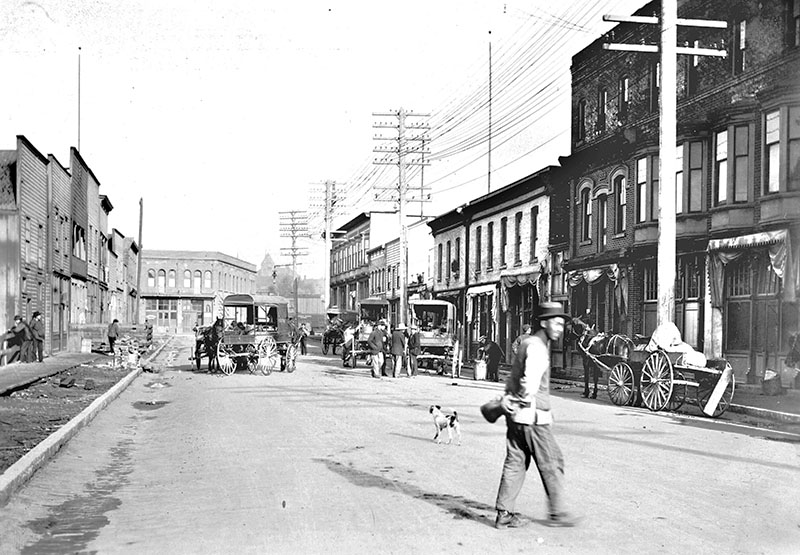
No pre-war photos exist of 111 Dupont, but this is just west of there in 1906. The 1889 Wing Sang building on the right is still with us. Photo by Philip T Timms, City of Vancouver Archives #677-530.
Building permit records show that the architect of 111 Dupont was WT Whiteway, who designed many landmark Vancouver buildings, including the Sun Tower, the Pennsylvania Hotel, the Holden Building/Tellier Towers, and Woodward’s Department Store. It cost $6,000 and is listed as a “dwelling,” which means the ground floor space was not retail as it is today. City directories indicate Laura Scott as the sole occupant of the building.
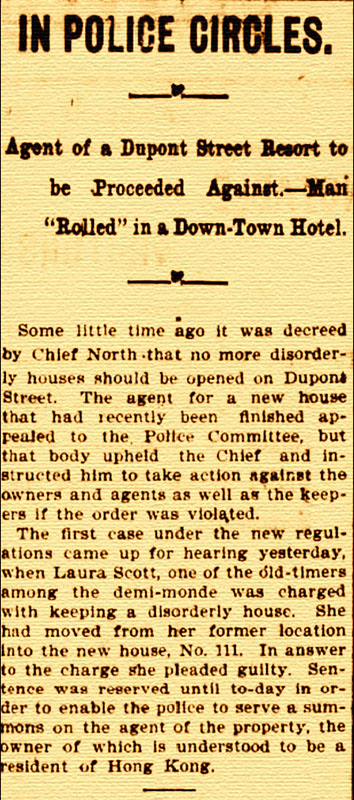
Officials tried but failed to shut down the Red Light District in 1903, when 111 Dupont opened. News-Advertiser July 8, 1903.
The Sam Kee Connection
Building owner Chu Lai was business partners with Chang Toy. Their company, Sam Kee, is best remembered for the flamboyant six-foot deep Sam Kee Building, now Jack Chow Insurance, on the southwest corner of Pender and Carrall. This connection further intertwines 111 East Pender with the rich commercial and social tapestry of Vancouver’s Chinatown.
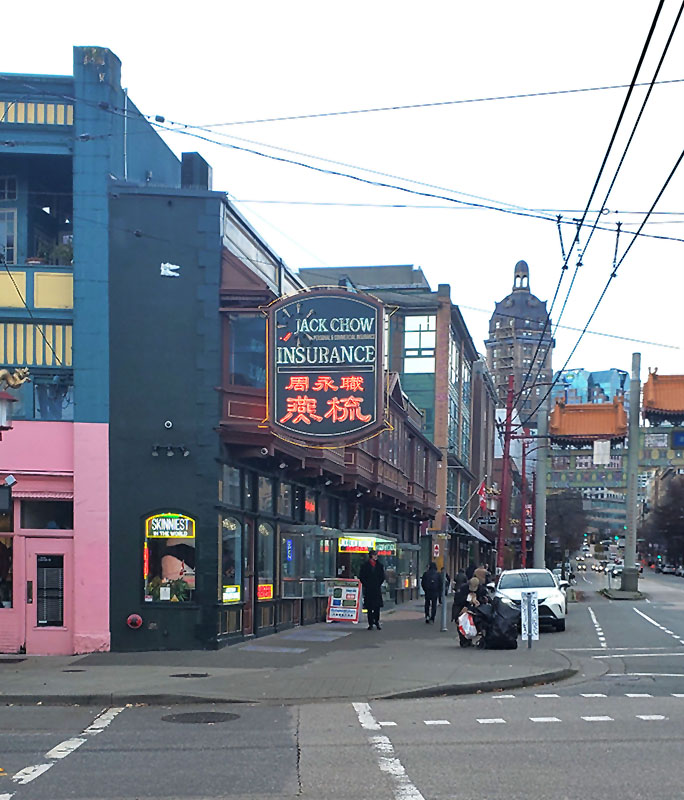
The Sam Kee Building, the “Skinniest Building in the World,” is the Sam Kee Company’s best known building. Note the Sun Tower in the distance, designed by the same architect as 111 Dupont, WT Whiteway.
City officials attempted to shut down the Red Light District in 1903, but were unsuccessful until crackdowns in 1906 forced the Red Light District, including Scott, to relocate to Harris/Shore Street (East Georgia west of Main). They didn’t want prostitution to be the first thing passengers saw when arriving at the new Great Northern Railway station at Columbia and Dupont.
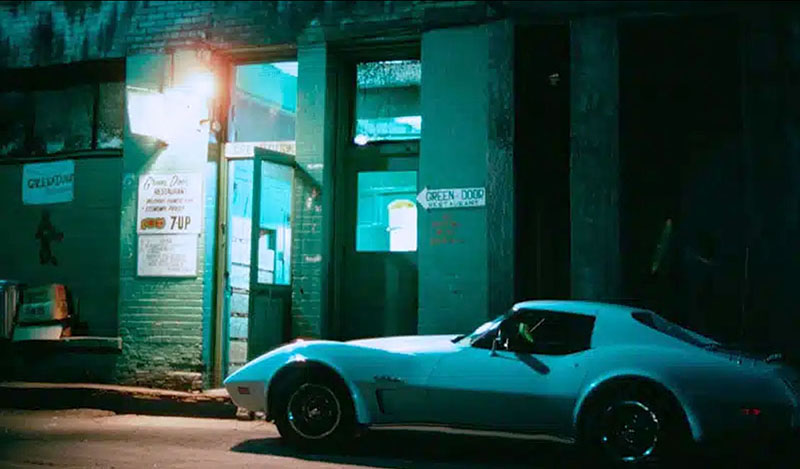
The Green Door in Market Alley, the rear of 111 East Pender, in 1977. Photo by Al Harvey.
From Brothel to Beloved Restaurant: The Green Door
111 East Pender is also notable as the home of the Green Door Restaurant, with its mysterious entrance in Market Alley in the rear from the 1930s until the 1990s and its tasty and very affordable food. The Green Door’s clientele was primarily Chinese until the late 1960s, when it was discovered by white bohemians, artsy types, hippies, and draft dodgers.
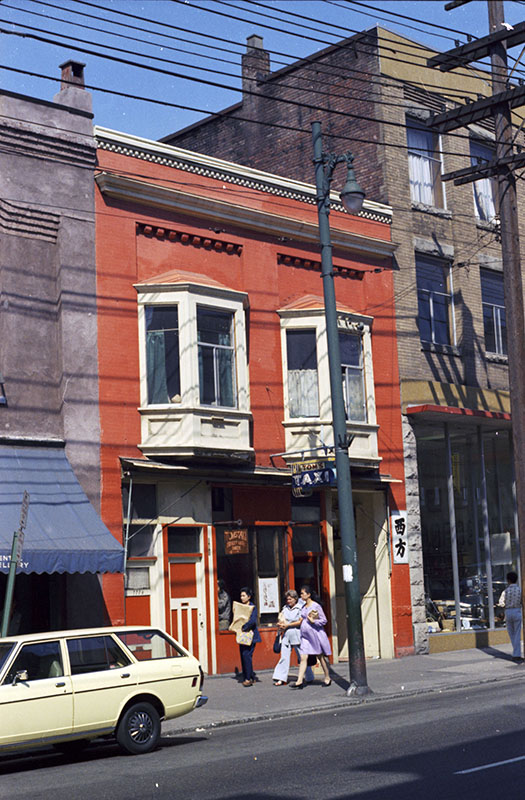
Tom’s Taxi was in one storefront of 111 East Pender in the 1960s and 70s, while a gambling club operated in the other one and the Green Door in the rear. City of Vancouver Archives #1095-0953
Later Life of 111 East Pender Street
After prostitution left the building, 111 became a gambling den. Tom’s Taxi occupied one of the storefronts in the 1960s and 70s, followed by various retail outlets. The entire ground level retail space is now occupied by Fuling Gifts & Housewares.
Most histories mentioning 111 East Pender omit its sex-trade origins. The only other surviving purpose-built brothels in Vancouver can be found on Alexander Street, Vancouver’s last official Red Light District until it was closed down during the First World War.

